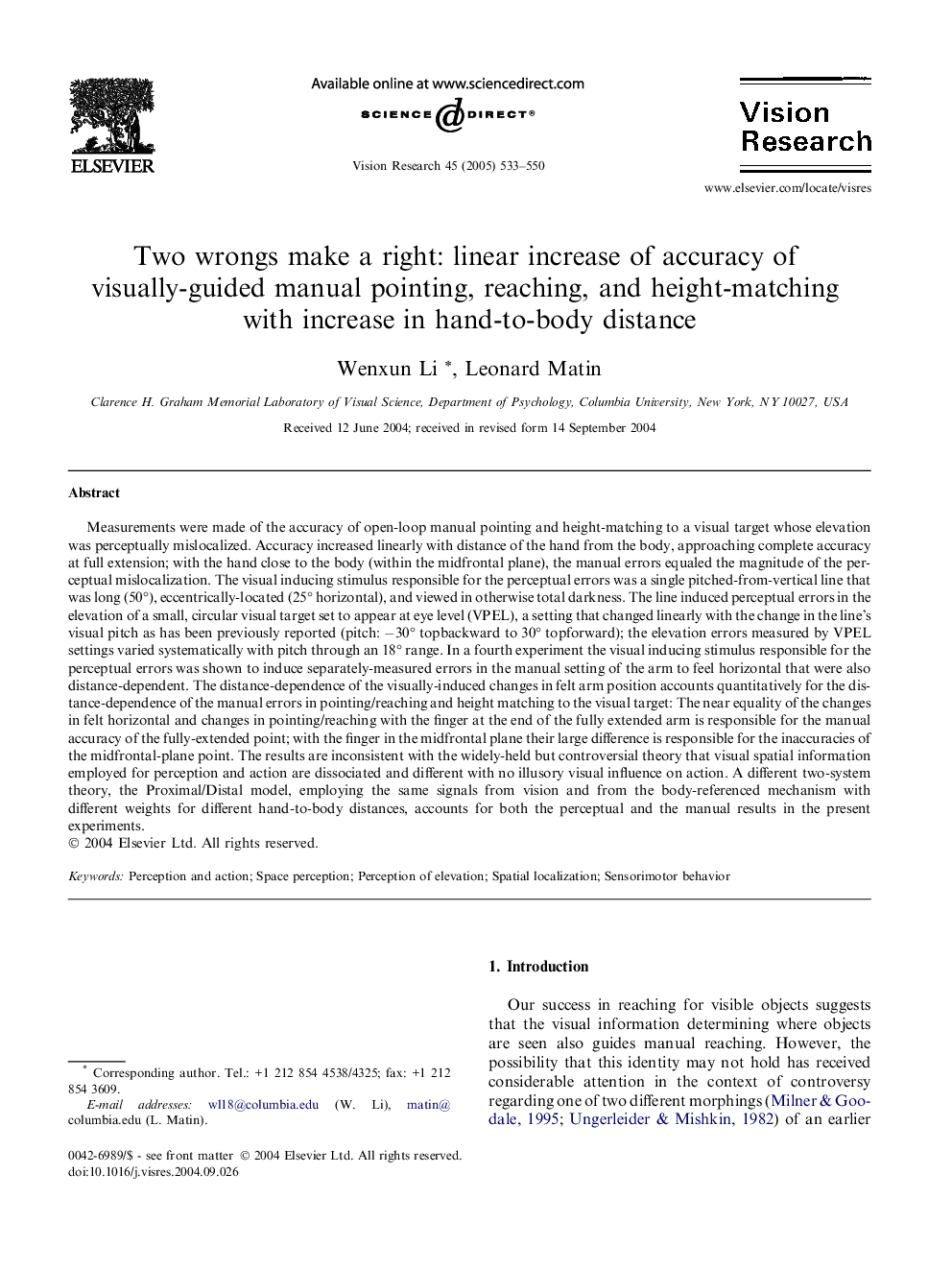| کد مقاله | کد نشریه | سال انتشار | مقاله انگلیسی | نسخه تمام متن |
|---|---|---|---|---|
| 9348520 | 1263584 | 2005 | 18 صفحه PDF | دانلود رایگان |
عنوان انگلیسی مقاله ISI
Two wrongs make a right: linear increase of accuracy of visually-guided manual pointing, reaching, and height-matching with increase in hand-to-body distance
دانلود مقاله + سفارش ترجمه
دانلود مقاله ISI انگلیسی
رایگان برای ایرانیان
کلمات کلیدی
موضوعات مرتبط
علوم زیستی و بیوفناوری
علم عصب شناسی
سیستم های حسی
پیش نمایش صفحه اول مقاله

چکیده انگلیسی
Measurements were made of the accuracy of open-loop manual pointing and height-matching to a visual target whose elevation was perceptually mislocalized. Accuracy increased linearly with distance of the hand from the body, approaching complete accuracy at full extension; with the hand close to the body (within the midfrontal plane), the manual errors equaled the magnitude of the perceptual mislocalization. The visual inducing stimulus responsible for the perceptual errors was a single pitched-from-vertical line that was long (50°), eccentrically-located (25° horizontal), and viewed in otherwise total darkness. The line induced perceptual errors in the elevation of a small, circular visual target set to appear at eye level (VPEL), a setting that changed linearly with the change in the line's visual pitch as has been previously reported (pitch: â30° topbackward to 30° topforward); the elevation errors measured by VPEL settings varied systematically with pitch through an 18° range. In a fourth experiment the visual inducing stimulus responsible for the perceptual errors was shown to induce separately-measured errors in the manual setting of the arm to feel horizontal that were also distance-dependent. The distance-dependence of the visually-induced changes in felt arm position accounts quantitatively for the distance-dependence of the manual errors in pointing/reaching and height matching to the visual target: The near equality of the changes in felt horizontal and changes in pointing/reaching with the finger at the end of the fully extended arm is responsible for the manual accuracy of the fully-extended point; with the finger in the midfrontal plane their large difference is responsible for the inaccuracies of the midfrontal-plane point. The results are inconsistent with the widely-held but controversial theory that visual spatial information employed for perception and action are dissociated and different with no illusory visual influence on action. A different two-system theory, the Proximal/Distal model, employing the same signals from vision and from the body-referenced mechanism with different weights for different hand-to-body distances, accounts for both the perceptual and the manual results in the present experiments.
ناشر
Database: Elsevier - ScienceDirect (ساینس دایرکت)
Journal: Vision Research - Volume 45, Issue 5, March 2005, Pages 533-550
Journal: Vision Research - Volume 45, Issue 5, March 2005, Pages 533-550
نویسندگان
Wenxun Li, Leonard Matin,